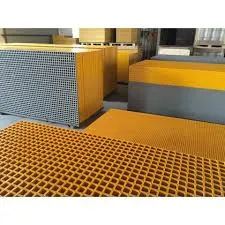
-
 Afrikaans
Afrikaans -
 Albanian
Albanian -
 Amharic
Amharic -
 Arabic
Arabic -
 Armenian
Armenian -
 Azerbaijani
Azerbaijani -
 Basque
Basque -
 Belarusian
Belarusian -
 Bengali
Bengali -
 Bosnian
Bosnian -
 Bulgarian
Bulgarian -
 Catalan
Catalan -
 Cebuano
Cebuano -
 China
China -
 China (Taiwan)
China (Taiwan) -
 Corsican
Corsican -
 Croatian
Croatian -
 Czech
Czech -
 Danish
Danish -
 Dutch
Dutch -
 English
English -
 Esperanto
Esperanto -
 Estonian
Estonian -
 Finnish
Finnish -
 French
French -
 Frisian
Frisian -
 Galician
Galician -
 Georgian
Georgian -
 German
German -
 Greek
Greek -
 Gujarati
Gujarati -
 Haitian Creole
Haitian Creole -
 hausa
hausa -
 hawaiian
hawaiian -
 Hebrew
Hebrew -
 Hindi
Hindi -
 Miao
Miao -
 Hungarian
Hungarian -
 Icelandic
Icelandic -
 igbo
igbo -
 Indonesian
Indonesian -
 irish
irish -
 Italian
Italian -
 Japanese
Japanese -
 Javanese
Javanese -
 Kannada
Kannada -
 kazakh
kazakh -
 Khmer
Khmer -
 Rwandese
Rwandese -
 Korean
Korean -
 Kurdish
Kurdish -
 Kyrgyz
Kyrgyz -
 Lao
Lao -
 Latin
Latin -
 Latvian
Latvian -
 Lithuanian
Lithuanian -
 Luxembourgish
Luxembourgish -
 Macedonian
Macedonian -
 Malgashi
Malgashi -
 Malay
Malay -
 Malayalam
Malayalam -
 Maltese
Maltese -
 Maori
Maori -
 Marathi
Marathi -
 Mongolian
Mongolian -
 Myanmar
Myanmar -
 Nepali
Nepali -
 Norwegian
Norwegian -
 Norwegian
Norwegian -
 Occitan
Occitan -
 Pashto
Pashto -
 Persian
Persian -
 Polish
Polish -
 Portuguese
Portuguese -
 Punjabi
Punjabi -
 Romanian
Romanian -
 Russian
Russian -
 Samoan
Samoan -
 Scottish Gaelic
Scottish Gaelic -
 Serbian
Serbian -
 Sesotho
Sesotho -
 Shona
Shona -
 Sindhi
Sindhi -
 Sinhala
Sinhala -
 Slovak
Slovak -
 Slovenian
Slovenian -
 Somali
Somali -
 Spanish
Spanish -
 Sundanese
Sundanese -
 Swahili
Swahili -
 Swedish
Swedish -
 Tagalog
Tagalog -
 Tajik
Tajik -
 Tamil
Tamil -
 Tatar
Tatar -
 Telugu
Telugu -
 Thai
Thai -
 Turkish
Turkish -
 Turkmen
Turkmen -
 Ukrainian
Ukrainian -
 Urdu
Urdu -
 Uighur
Uighur -
 Uzbek
Uzbek -
 Vietnamese
Vietnamese -
 Welsh
Welsh -
 Bantu
Bantu -
 Yiddish
Yiddish -
 Yoruba
Yoruba -
 Zulu
Zulu
FRP Flanged and Blind Components for Enhanced Performance in Industrial Applications
Understanding FRP Flanges and Blinds A Comprehensive Overview
In the realm of industrial applications and construction, the use of specialized materials and components is critical for ensuring safety, durability, and efficiency. One such component that has gained considerable attention in recent years is the Fiber-Reinforced Plastic (FRP) flange and blind. These innovative solutions offer numerous advantages over traditional materials, such as metal, making them ideal for a variety of applications.
What is FRP?
Fiber-Reinforced Plastic, commonly abbreviated as FRP, is a composite material made from a polymer matrix reinforced with fibers, usually glass, carbon, or aramid. The incorporation of fibers enhances the overall strength and rigidity of the plastic, resulting in a lightweight yet robust product. Due to its corrosion resistance, low thermal conductivity, high strength-to-weight ratio, and minimal maintenance requirements, FRP has become a favored material in industries such as chemical processing, water treatment, and oil and gas.
FRP Flanges
Flanges play a pivotal role in piping systems, as they are used to connect two sections of piping or to attach a pipe to a valve or other equipment. FRP flanges are designed to withstand high pressures and temperatures while providing excellent leak resistance. Unlike traditional metal flanges, FRP flanges are not susceptible to rust, corrosion, or scaling, which makes them particularly advantageous in environments with aggressive chemicals or constant moisture.
One of the prominent features of FRP flanges is their versatility. They can be manufactured in various diameters, thicknesses, and designs to meet specific application requirements. In addition to their standard applications, FRP flanges can be tailored for custom projects, allowing engineers to create solutions that meet their unique specifications.
frp flange and blind

FRP Blinds
Alongside flanges, FRP blinds are essential components that serve to isolate sections of piping or to block off equipment for maintenance. A blind is a solid plate that can be bolted to a flange connection, effectively sealing off the pipeline. In FRP applications, using FRP blinds not only complements the corrosion-resistant properties of FRP flanges, but it also ensures a consistent material profile within the system.
The lightweight nature of FRP blinds makes them easier to handle and install compared to traditional metal blinds, reducing labor costs and installation time. Furthermore, the durability of FRP means that these blinds can withstand harsh environmental conditions without compromising their structural integrity.
Applications in Industry
The use of FRP flanges and blinds is becoming increasingly common across various sectors. In the chemical industry, they are employed in piping systems that transport corrosive substances, thereby preventing leaks and ensuring safe operation. In wastewater treatment plants, FRP components are used to mitigate the effects of aggressive chemicals typically found in wastewater. Additionally, the oil and gas industry benefits from FRP components due to their ability to withstand high pressures and temperatures while preventing corrosion.
Conclusion
In conclusion, FRP flanges and blinds are revolutionizing the way industries approach the challenges associated with piping systems. Their lightweight, corrosion-resistant, and customizable nature makes them an excellent choice for applications that require robustness and reliability. As technology continues to advance, the use of FRP materials will likely expand, offering even more innovative solutions for industries facing the challenges of modern infrastructure. Embracing FRP technologies not only enhances operational efficiency but also significantly contributes to safety and environmental sustainability in industrial practices.
Latest news
-
Exploring the Benefits of Top Hammer Drifter Rods for Enhanced Drilling PerformanceNewsJun.10,2025
-
High-Precision Fiberglass Winding Machine for GRP/FRP Pipe Production – Reliable & Efficient SolutionsNewsJun.10,2025
-
FRP Pipes & Fittings for Shipbuilding - Corrosion-Resistant & LightweightNewsJun.09,2025
-
Premium FRP Flooring Solutions Durable & Slip-ResistantNewsJun.09,2025
-
Premium Fiberglass Rectangular Tanks Durable & Lightweight SolutionNewsJun.09,2025
-
Tapered Drill String Design Guide Durable Performance & UsesNewsJun.09,2025









